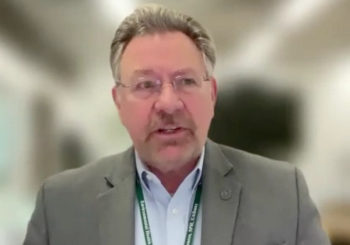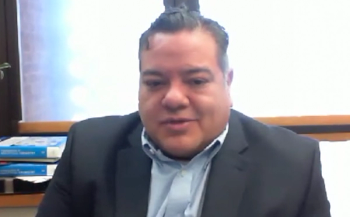
Investigating the Adoption of Raman Spectroscopy in Routine Oncology Workflows: A SciX Interview with Nick Stone, Part 1
In a preview to the upcoming SciX Conference October 20 to 25 in Raleigh, North Carolina, Spectroscopy sat down with Nick Stone of the University of Exeter to discuss his recent work in oncology and clinical analysis.
The Charles Mann Award is an annual award given to an individual who has made significant contributions to applied Raman spectroscopy (1). At the SciX 2024 Conference in Raleigh, North Carolina, the Charles Mann Award for Applied Raman Spectroscopy will be presented to Nick Stone.
Nick Stone, a former National Health Service (NHS) Consultant Medical Physicist, is a Professor of Biomedical Imaging and Biosensing at the University of Exeter. He pioneered Raman spectroscopy in various cancers, collaborating with clinicians to develop real-time diagnostic tools (1). His work includes endoscopic Raman for early cancer detection, smart Raman needles, and non-invasive techniques like spatially offset Raman for probing buried lesions (1). He has also led advancements in surface enhanced spatially offset Raman spectroscopy (SESORS), a technique using functionalized nanoparticles for deep-tissue imaging (1).
In a recent collaborative research effort, Stone and others examined the challenge of transferring Raman spectroscopy data across different clinical centers for consistent cancer diagnoses. Researchers investigated the transferability of Raman spectra collected from human esophageal tissue at three different centers, each using the same make and model of spectrometer (2,3). By adhering to a common protocol, 61 tissue samples from 51 patients were classified into five pathologies (2). The study found no significant variation in model accuracy or log-loss when data from one center were applied to others. Importantly, no additional computational correction was needed, suggesting that system transferability can be achieved without complex data pre-processing (2).
In part 1 of our conversation with Nick Stone, he answers the following questions:
- When did you first become interested in oncology and clinical analysis? Can you briefly describe some of your recent work?
- What are the key challenges that have historically prevented the widespread adoption of Raman spectroscopy in routine oncology workflows, and how does your study address these challenges?
This interview is part of our annual SciX Conference coverage. To read more of our coverage leading up to the SciX 2024 conference, click here:
References
(1) FACSS, Charles Mann Award for Applied Raman Spectroscopy. SciX Conference. Available at:
(2) Blake, N.; Gaifulina, R.; Isabelle, M.; et al. System Transferability of Raman-based Oesophageal Tissue Classification Using Modern Machine Learning to Support Multi-Centre Clinical Diagnostics. BJC Rep. 2024, 2, 52. DOI:
(3) Chasse, J. Raman-Based Oesophageal Tissue Classification and Modern Machine Learning in the Support of Multi-Center Clinical Diagnostics: An Interview with 2024 Charles Mann Award Winner Nick Stone. Spectroscopy. Available at:
Newsletter
Get essential updates on the latest spectroscopy technologies, regulatory standards, and best practices—subscribe today to Spectroscopy.



